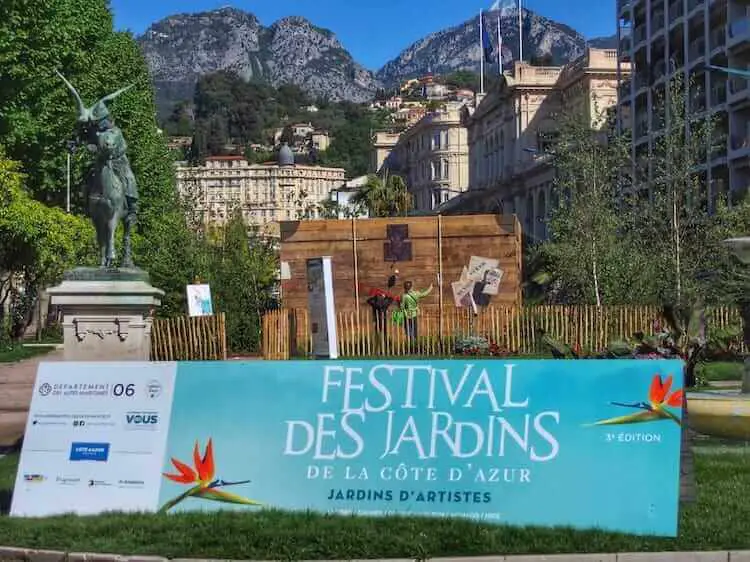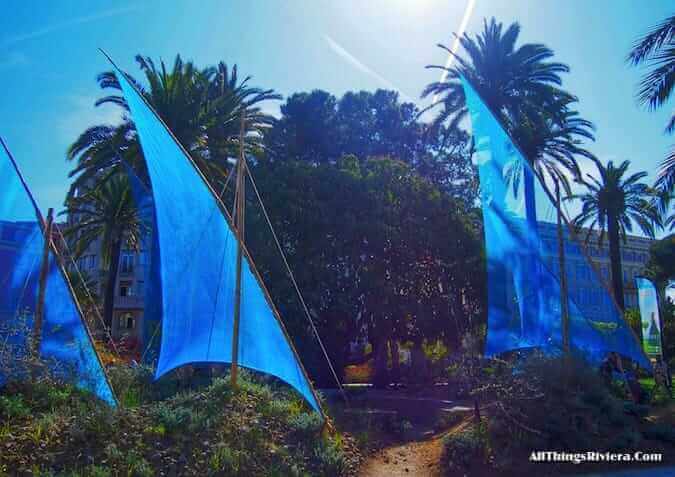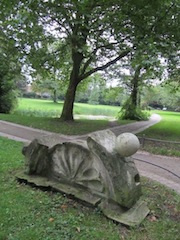In Germany, more even than in other European countries, the most interesting parts of major cities can be located in the “trendy neighbourhoods”, the Szeneviertel as the Germans call them – a term which, perhaps inadvertently, references the world of the theatre.
Inadvertently or not, however, the analogy feels appropriate because these quarters appear to have been re-styled as a stage set, presenting what the inhabitants of these quarters believe to be a better type of city.
Discovering the Hoods of Hamburg
A better-looking city, where the drab greys and browns of conventional streetviews have been eliminated in favour of strong and vivid colours …

… a better-structured city of bicycles and corner shops …

… and, above all, a better-feeling, friendlier city where everybody is welcomed with open hearts and minds.
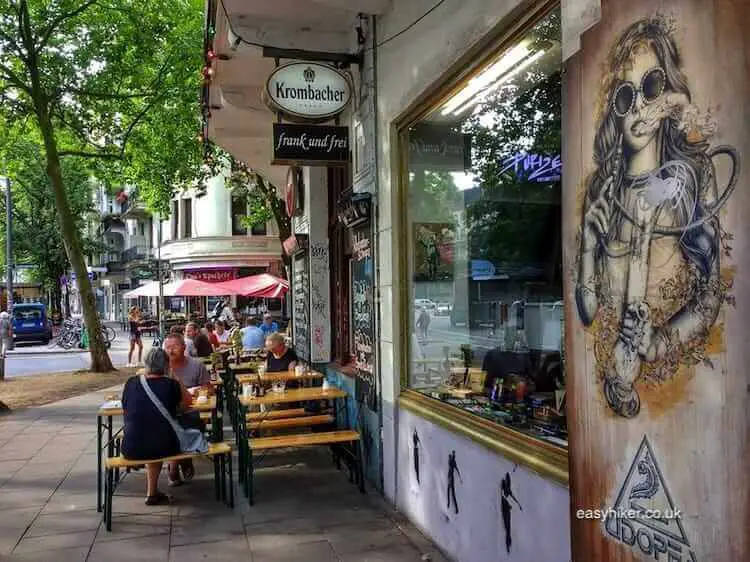
One of the liveliest such “scenes” in Germany can be found in Hamburg – although the great port city on the country’s northern coast uses a formula which is a little different from the one invented by Berlin, the granddaddy of them all.
Berlin’s shtick of “poor but sexy”, after all, never seemed the right fit for Hamburg, the most prosperous of all metropolitan areas in Germany. Hamburg’s unique selling point is the large number of jobs in its creative industries: the city is still the German media capital, accommodating nearly 30,000 companies in fields such as book publishing, advertising and journalism which provide an income to more than 100,000 full-time and part-time employees.
Many of these companies may be tiny, and not all of these jobs come with six-figure salaries (or any guaranteed monthly salaries at all), but each one of these 100,000 “media folks” will be dreaming of a glamourous career in one of Hamburg’s TV production companies or at one of the country’s most influential political weeklies (Der Spiegel, Die Zeit and Stern) which have all remained in the city rather than following the national government to Berlin.
Trendy and stylish rather than “poor but sexy”, Hamburg’s “hoods” are the Hollywood for young and ambitious German intellectuals.
Many of these “media folk” reside in one of three neighbouring quarters, which are nestling side-by-side on the northern edge of the town centre.
We begin our tour of this “scene” in the northernmost corner of this area, at the Schanzenturm just outside the Sternschanze subway station …
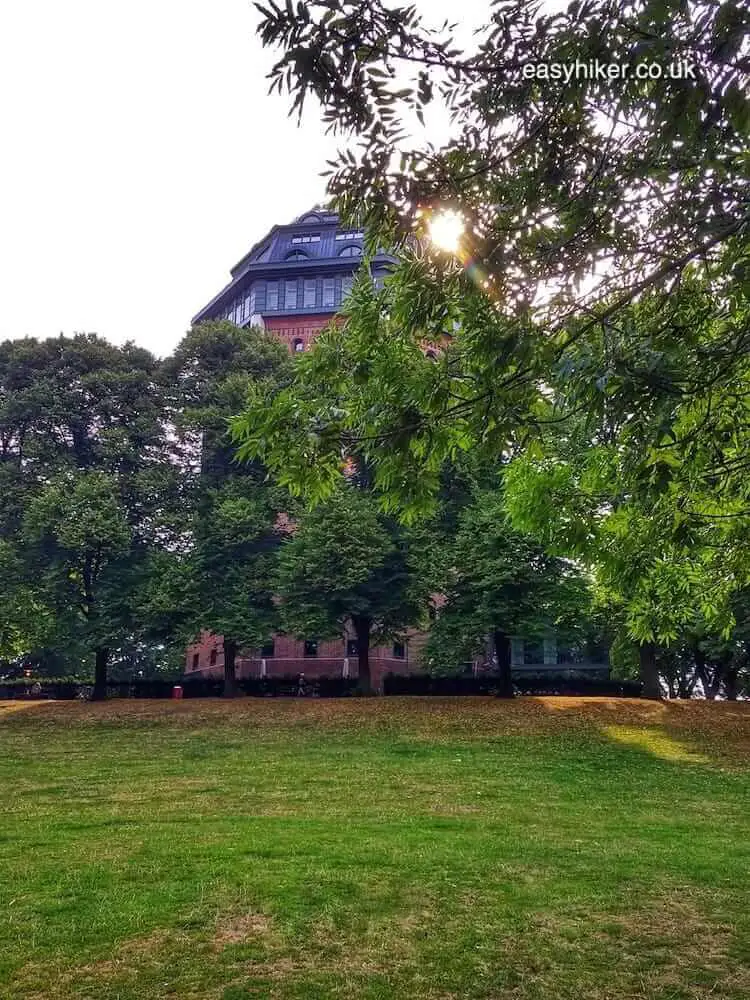
… a tower that was, until 1961, the largest active water tower in Europe and which has remained the main landmark of the Schanzenviertel, the first stop on our itinerary.
Walk along Sternschanze and then left into Schanzenstrasse, continuing underneath the railway bridge before turning right into the cozy Susannenstrasse.
After approx. 200 metres, turn left into Schulterblatt, a street which once marked the frontier between the German-controlled town centre and the suburb of Altona which was (from 1640 to 1867) part of Denmark.
On your right hand side, you will spot the Rote Flora, a former theatre …
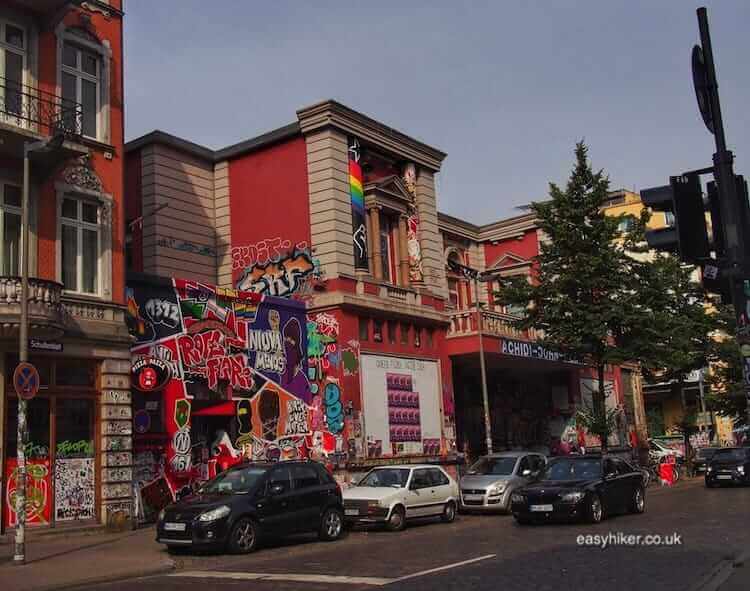
… which has been occupied by left-wing activists since 1989 and turned into a cultural centre.
Before WWII, the Schanzenviertel, the hoods of Hamburg, was a mixed neighbourhood of entertainment venues, shops and residential buildings.
Cast an occasional glance into the backyards of the street-facing buildings along Schulterblatt for a look at the residential blocks from the period, which range from the functional and austere …

… to buildings with an understated, almost British elegance.
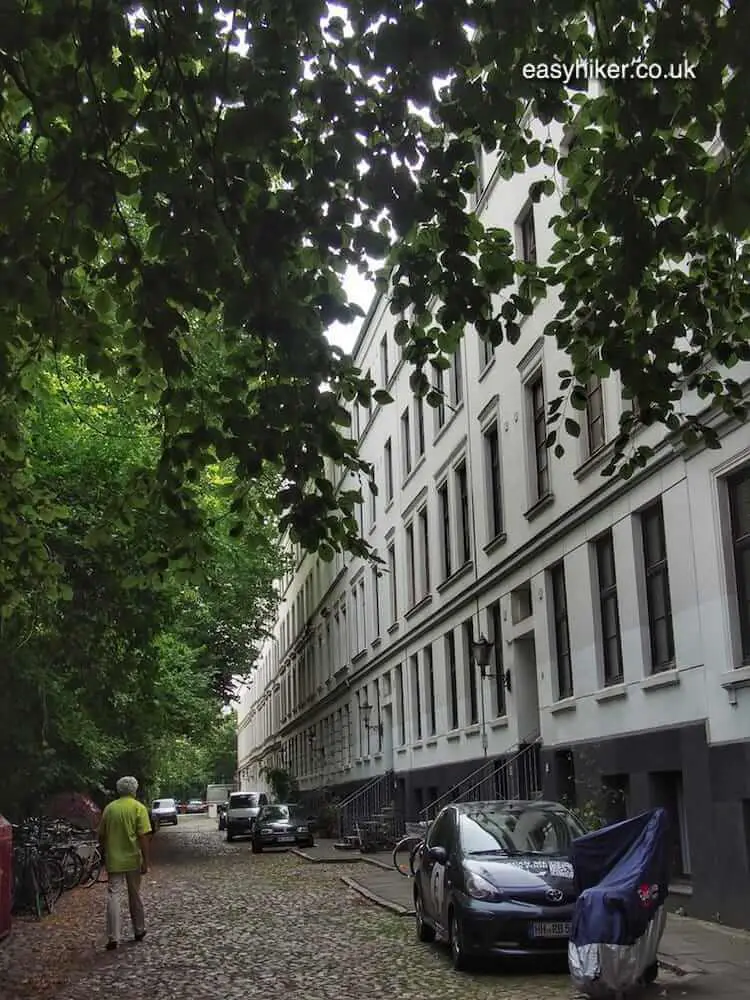
Continue down Schulterblatt and, where this street meets Schanzenstrasse, look left on the square for the entrance into Augustinenpassage.
Follow this narrow lane until the end, turn right into Sternstrasse and use the Schlachthofpassage on your left (the entire area was once occupied by the municipal slaughterhouse) …
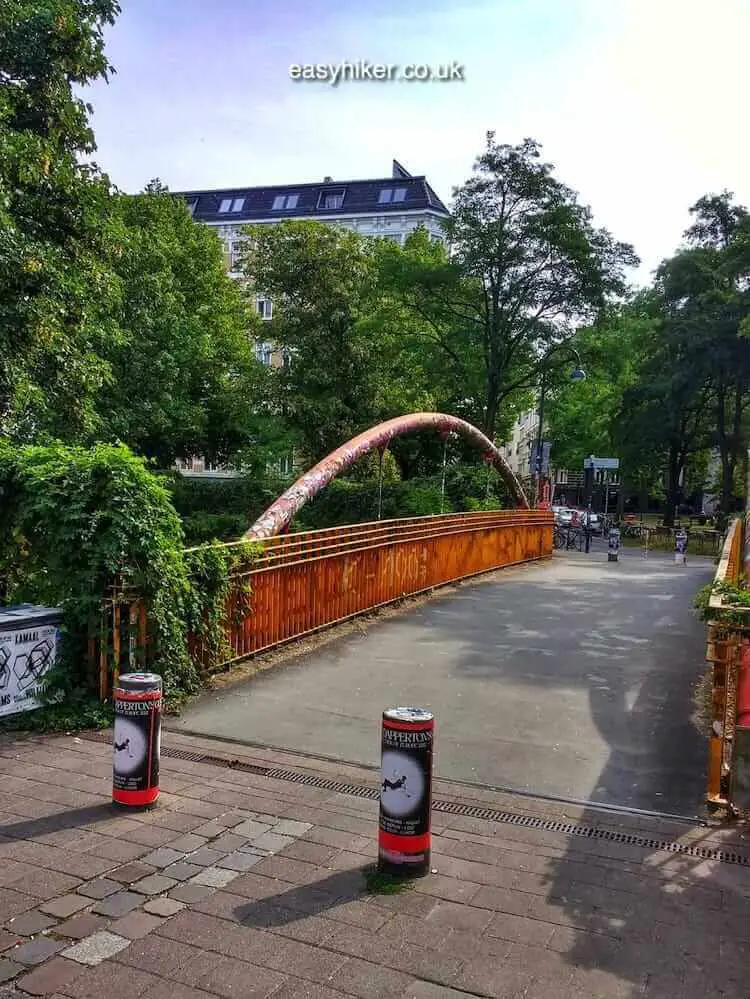
… to continue into the Marktstrasse, the high street of the Karolinenviertel.
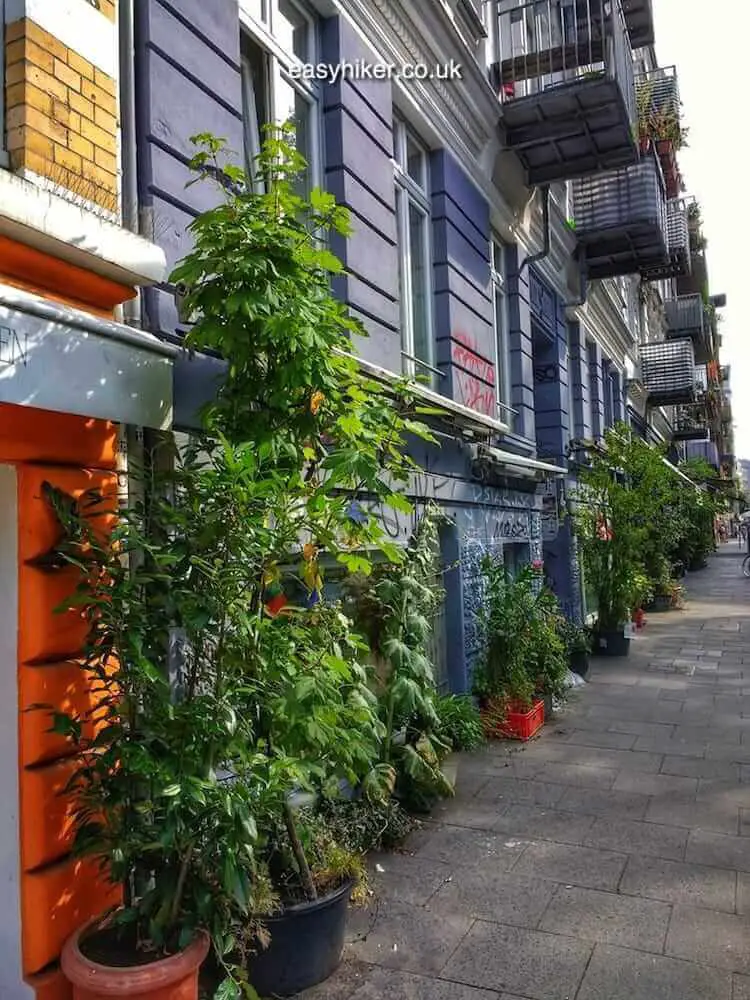
This quarter used to be slightly less respectable than the Schanzenviertel, its neighbour to the north.
In the years after WWII, the municipal administration – under a plan to replace the entire quarter with a modern congress centre – started to purchase bomb sites and residential buildings, only to let these buildings fall into neglect when their ambitious project failed to materialize.
The rebirth of the Karoviertel dates from the 1990s when, under the twin suns of the post-reunification and the New Economy boom, many start-up companies blossomed and – together with fashion boutiques, furniture designers and fancy eateries – began to settle here.
Today, the Karolinenviertel has an even more genteel feel to it than its twin quarter on the other side of the Schlachthof.
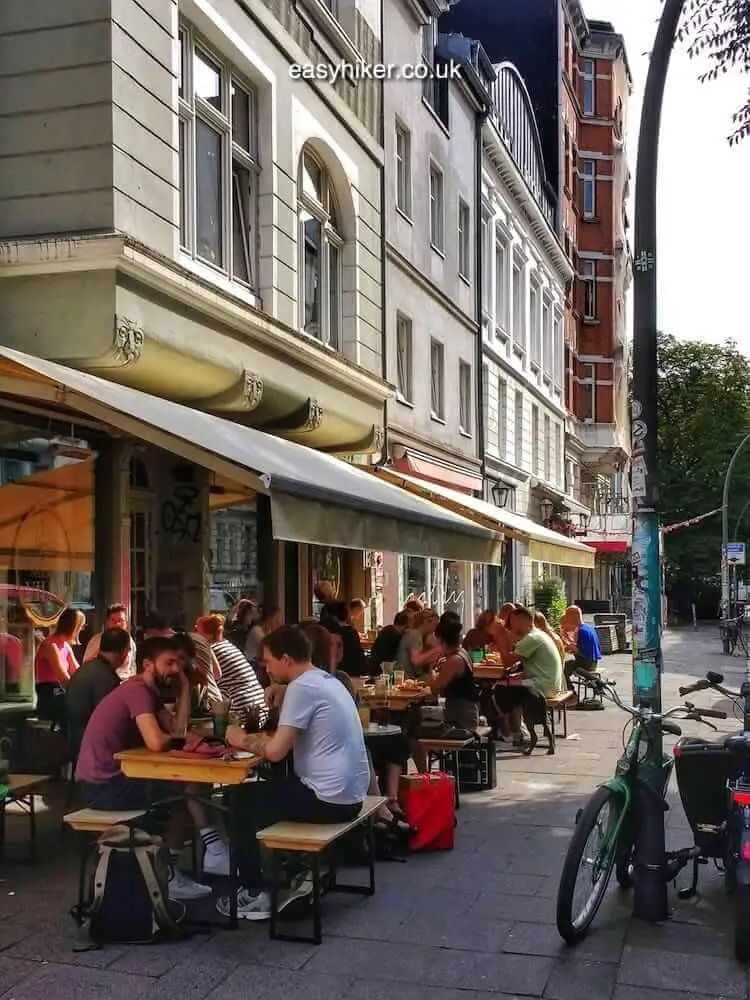
At the end of the Marktstrasse, turn right into the busy four-lane highway of the Holstentor. Turn right again after about 100 metres into Holstenglacis and right once more into Feldstrasse.
The vast open space on your left hand side is the Heiligengeistfeld, which is fully occupied only three times a year (for 4 weeks at a time) when the Hamburger Dom resides here, North Germany’s largest funfair.
The most conspicuous landmark of the area, however, is the enormous Feldstrassenbunker, built during WWII as a dual-purpose defence structure, which combined an air-raid shelter (that provided space for 25,000 people) with four roof-based launching pads for anti-aircraft missiles, one in each corner of the building.

The building – known in today’s Hamburg as the Medienbunker because the tenants of the modern office conversion include many media companies – is, once again, under reconstruction.
The plan is to turn the entire upper section into a multi-storey tropical roof garden, giving the wartime behemoth a second – or third – life as something straight out of Xanadu.
Right next to the Medienbunker, you can spot a building that is enjoying even more of a cult status.

This is the stadium of what is, traditionally, Hamburg’s second football club. Thanks to its “alternative” image and its iconic skull-and-bones logo, however, the FC St. Pauli has nowadays more fans across the world than the staid but scandal-ridden Hamburger SV.
Join us next week when we will be crossing over into Hamburg’s third Szeneviertel from the hoods of Hamburg for a somewhat different “scene” and a more intense, heavier beat.




